Northern Sierra breaks all-time record for wettest water year

With more than five months still to go, California's northern Sierra Nevada has already achieved its wettest water year in recorded history, the National Weather Service office in Sacramento announced yesterday. The mountains saw an incredible amount of snow this season, with a number of stations recording over 16.2 m (638 inches).
As of 04:00 PDT on Thursday, April 13, 2017, the Northern Sierra 8-Station Index has surpassed the mark for the wettest water year (October 1 – September 30) on record with 2.28 m (89.7 inches), the office said. The previous water year record was 2.23 m (88.5 inches) set in 1992 – 1983. The eight weather stations averaged are Mount Shasta City, Shasta Dam, Mineral, Quincy, Brush Creek, Sierraville RS, Blue Canyon, and Pacific House.
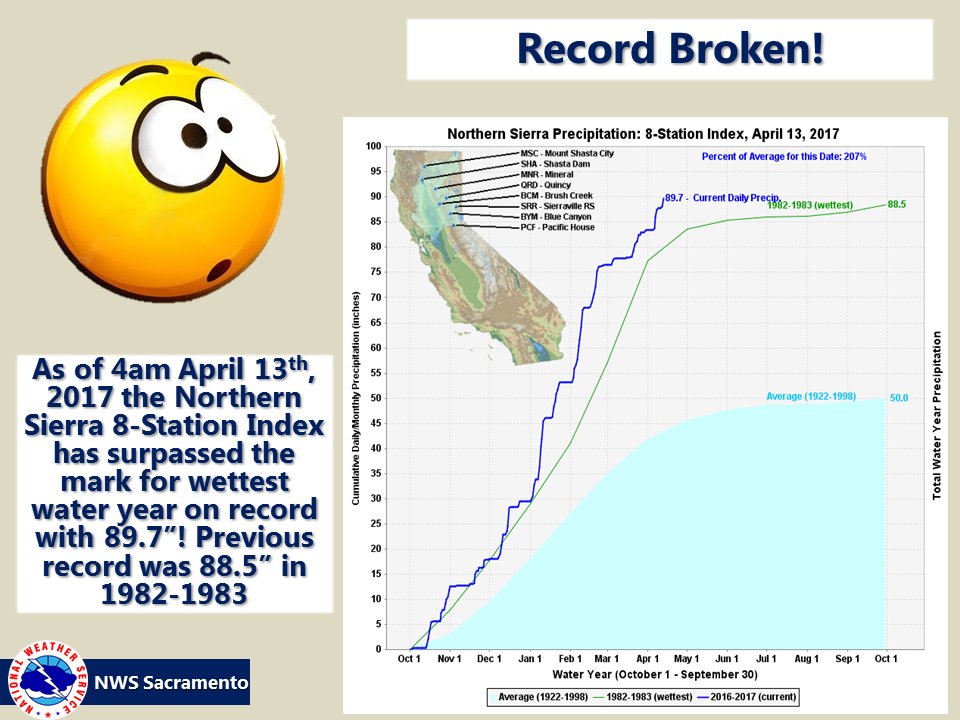
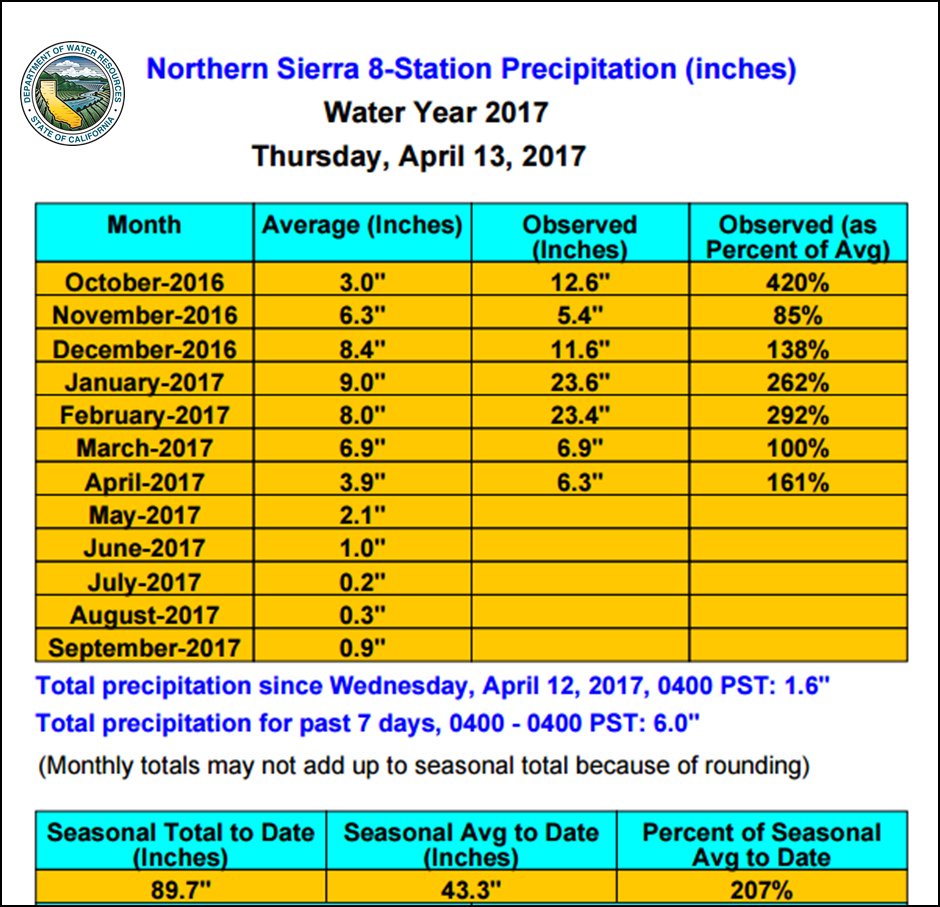
According to Weatherbell's Ryan Maue, California has received about 340 trillion liters (90 trillion gallons) of water-equivalent precipitation which is slightly above 1982 for wettest. Jason Samenow, Capital Weather Gang's chief meteorologist, said the phenomena responsible for this are known as atmospheric rivers.
Between October and March, '45 of these rivers in the sky were documented gushing into the West Coast from the Pacific Ocean,' Samenow writes. A large fraction of them made landfall in Northern California, and several were classified as strong or extreme.
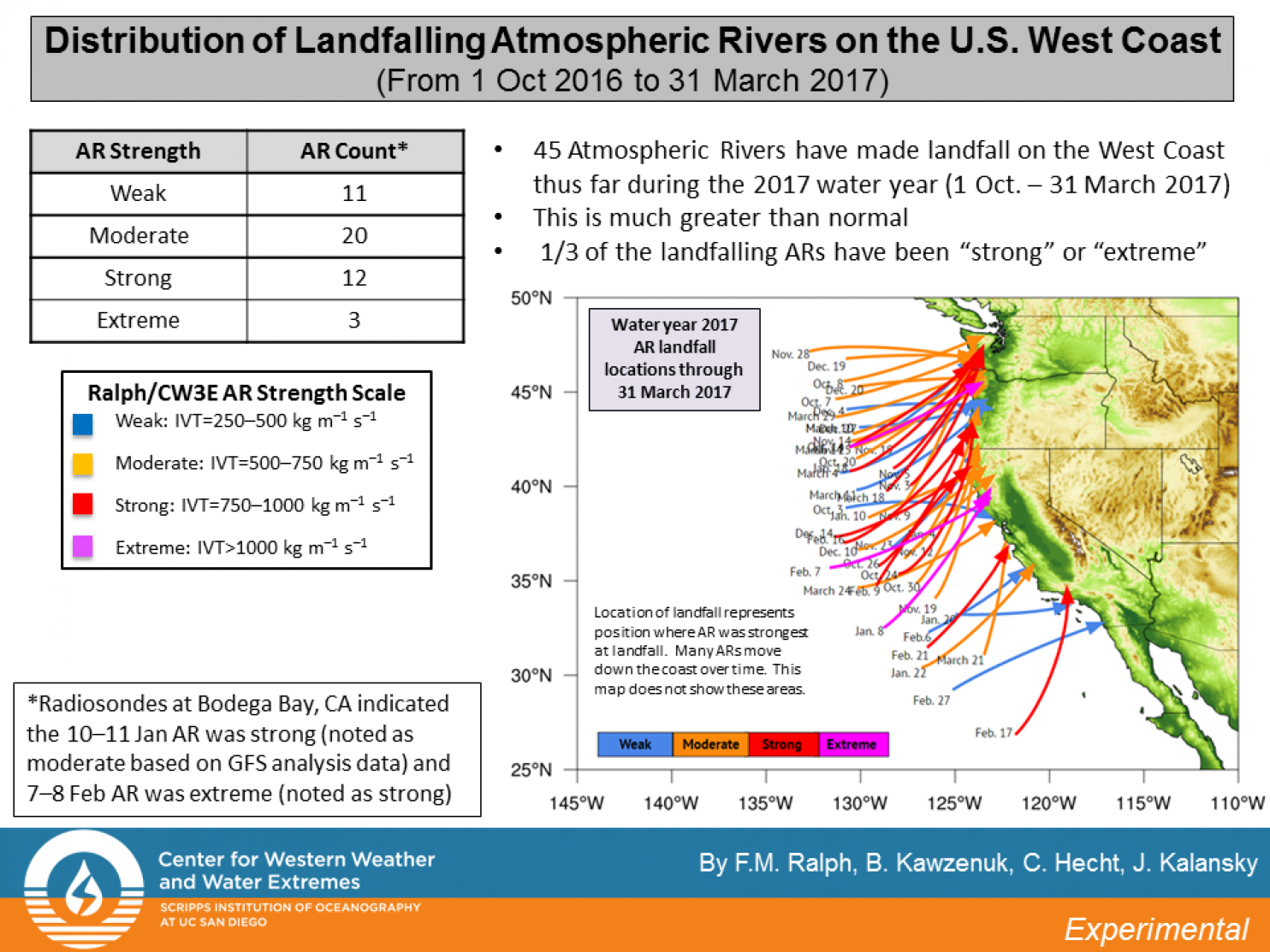
NWS Sacramento said an incredible amount of snow has fallen across the Sierra Nevada this winter season and there is likely more to come. A number of stations registered over 16.2 meters (638 inches).
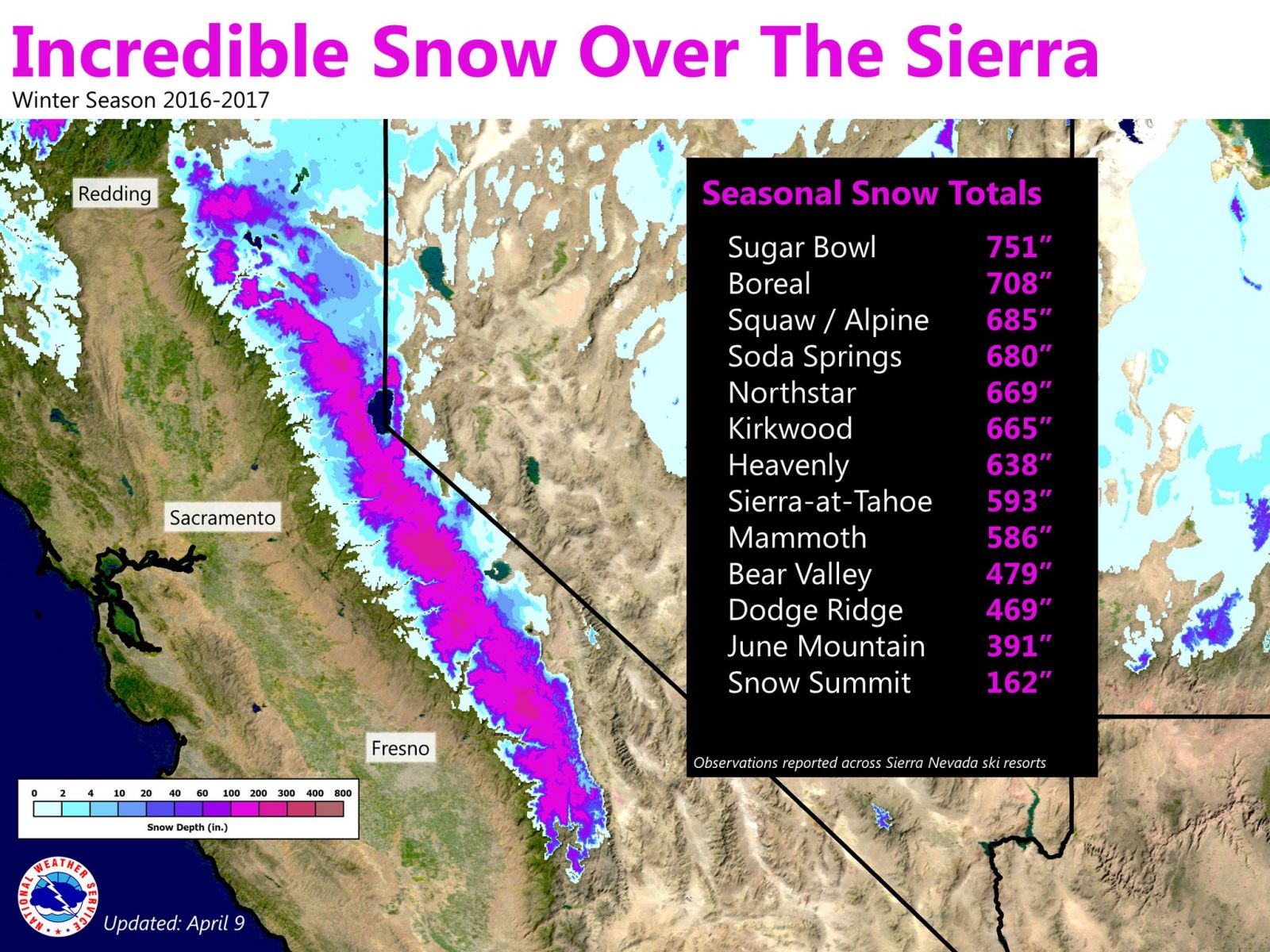
"What’s remarkable is that precipitation this water year outgunned 1982-1983, which featured one of the strongest El Niño events on record," Samenow said. "El Niño events tend to tap into abnormally warm ocean waters over the tropical Pacific to intensify precipitation along the West Coast. Yet there was no El Niño this winter."
"The quantity of precipitation over the winter stunned forecasters, who failed to predict such amounts in the fall," he said.
With all this precipitation over the past couple of months, California has successfully ended its drought.
As of April 11, just 1.06% of the state is in a severe drought condition, 7.18% in moderate and 15.22% in abnormally dry. The rest of the state (76.54%) is completely drought-free.
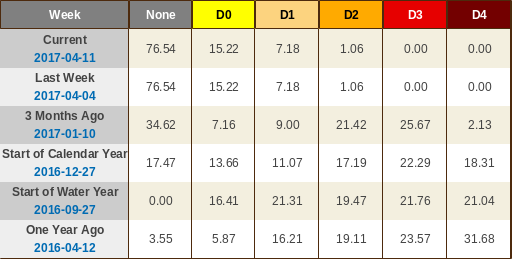
U.S. Drought Monitor California – April 11, 2017
Featured image: 2017 Epic Winter Heavenly Mountain Resort Lake Tahoe, California. Credit: jcookfisher (Flickr – CC)

They want to load the Sierras with as much ice as possible. I predict that when the Spring thaw is in full swing we will also have heavy rain and flooding. Call it a type of HAARP weather forecast model based on recurring trends.